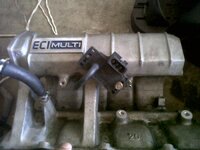93_tsi_fwd
15+ Year Contributor
- 2,625
- 16
- Dec 20, 2006
-
San Jose,
California
I going to run speed density and have 1 concern on where to put the vacuum line.
I dont want to take out my intake manifold and drill and tap on the suggested location but can i just hook it up to the PCV valve location on the IM and just run the PCV valve to a catch can?
Has anyone done it like this? If so, how did it go?
I dont want to take out my intake manifold and drill and tap on the suggested location but can i just hook it up to the PCV valve location on the IM and just run the PCV valve to a catch can?
Has anyone done it like this? If so, how did it go?






 You never let me get away with anything.
You never let me get away with anything. 














